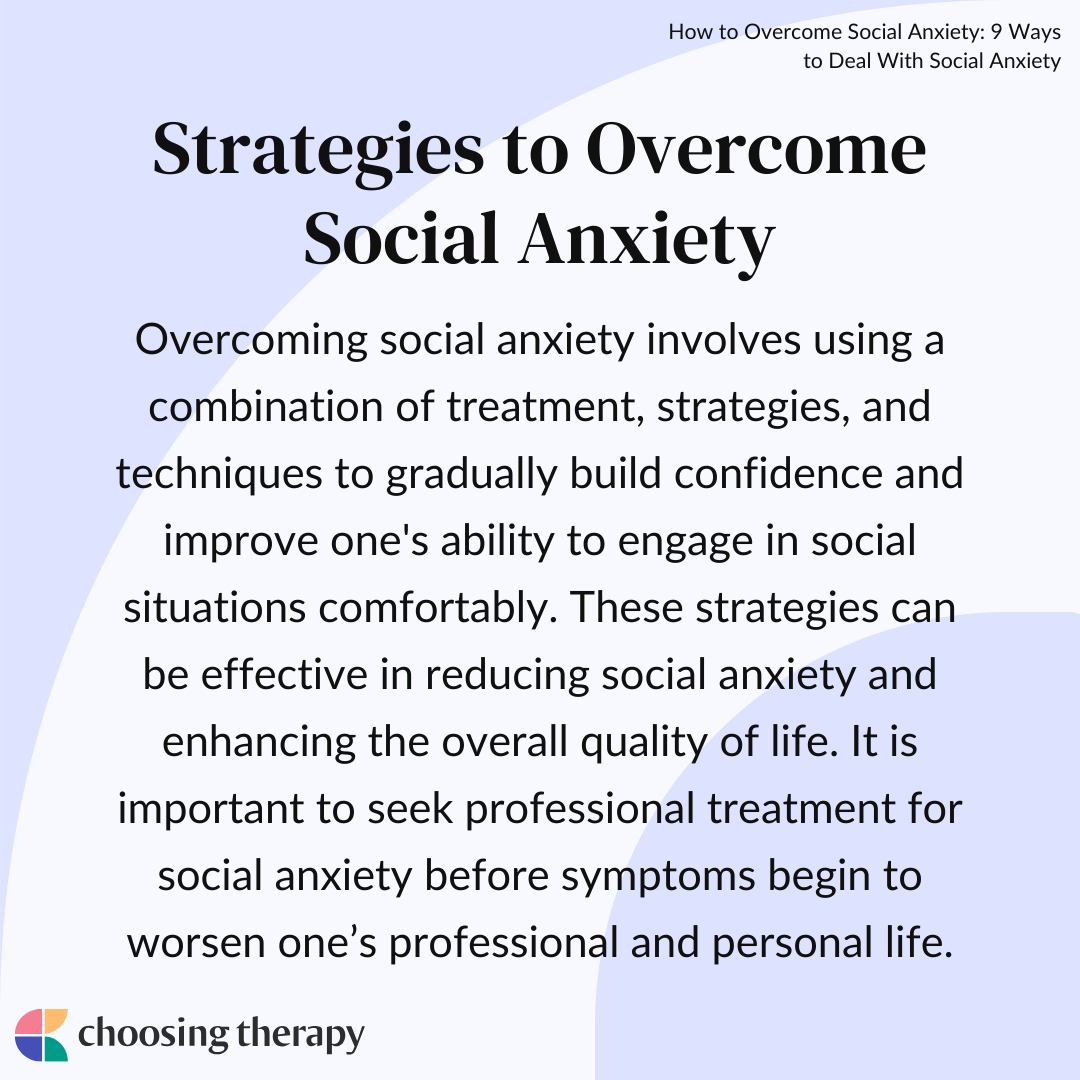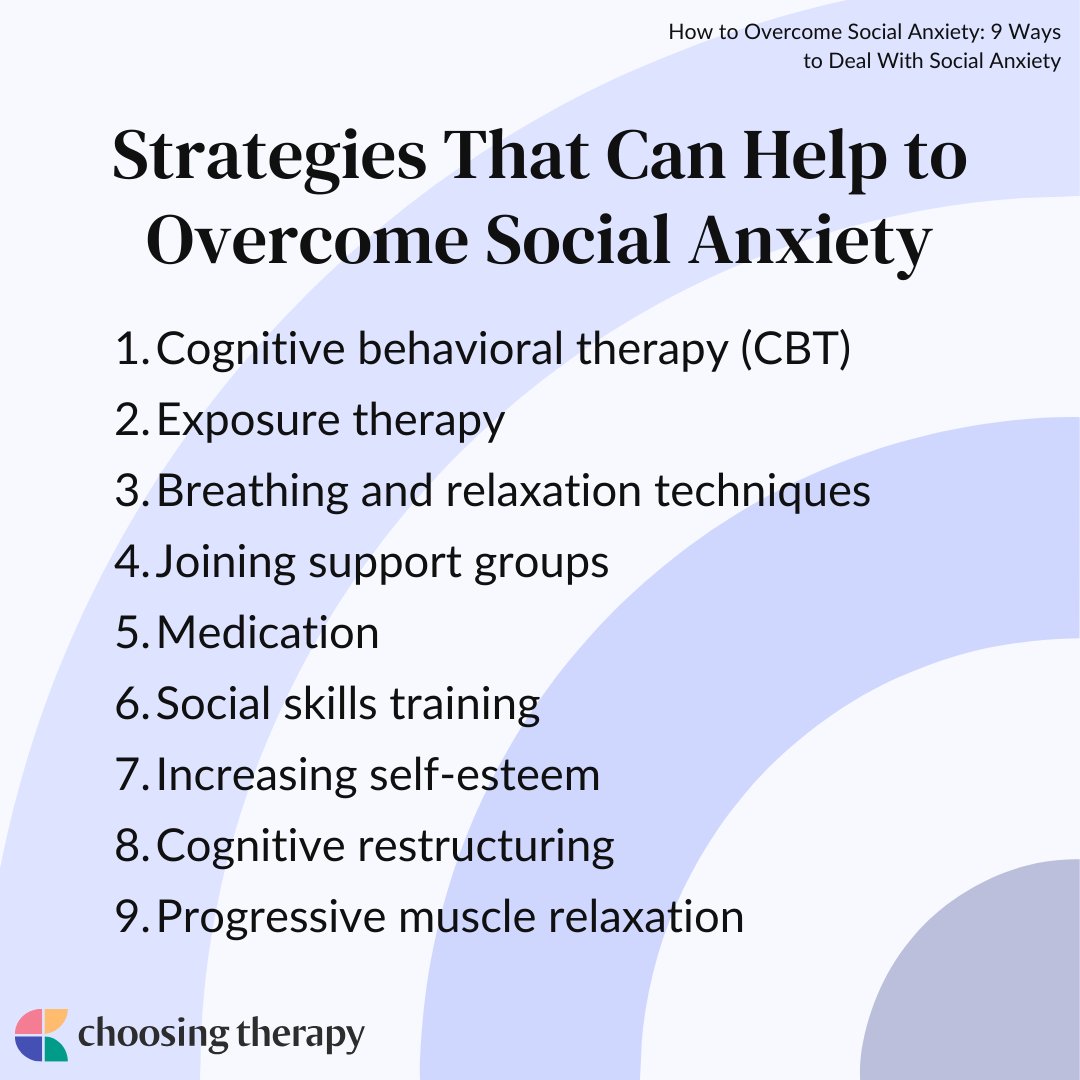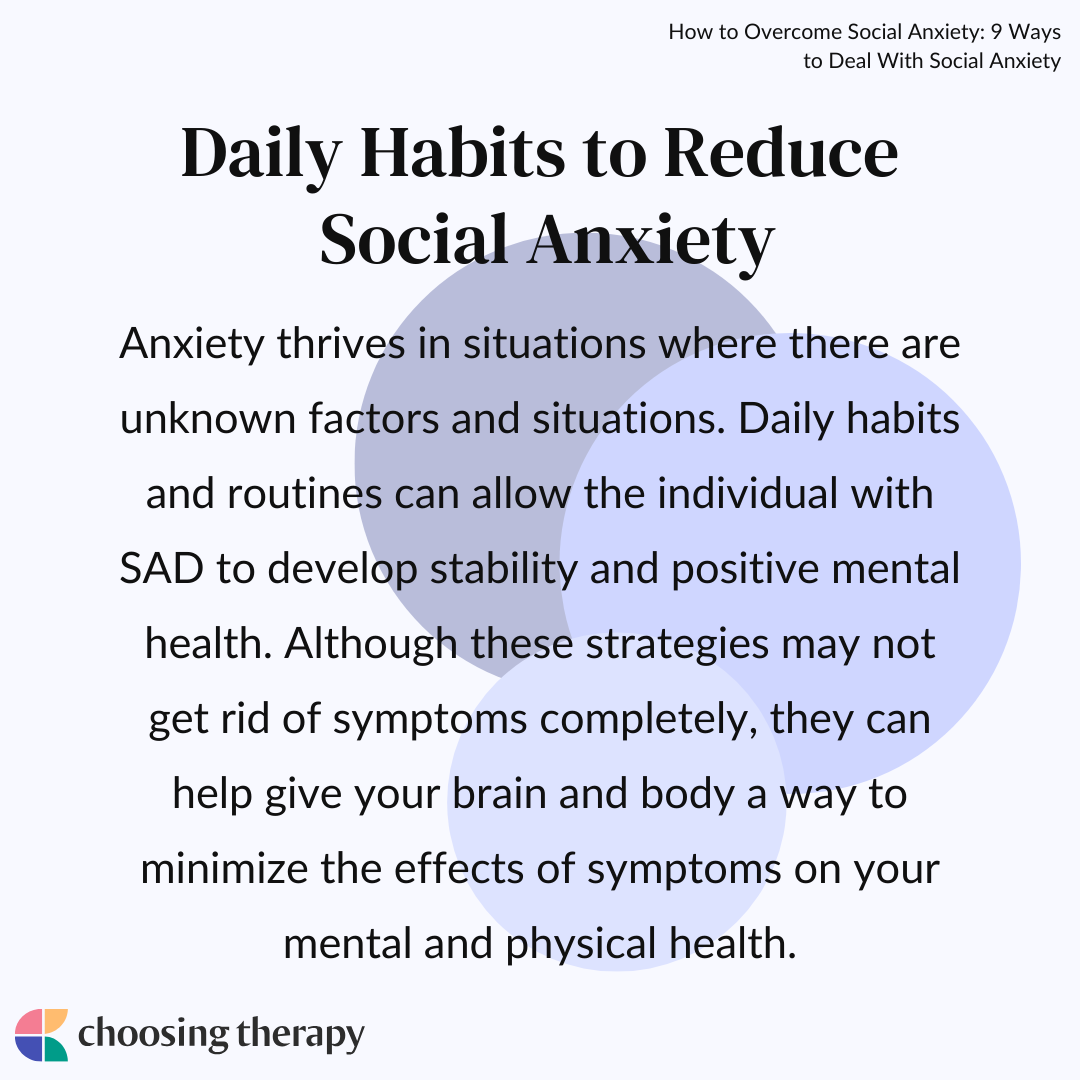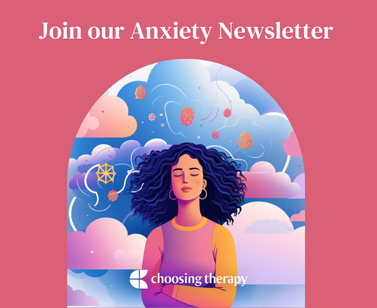Social anxiety disorder (SAD) is a common anxiety disorder that manifests as pervasive and marked fear of judgment or rejection in social situations.1 Through practicing social skills, desensitizing yourself to feared situations, and mastering some simple relaxation techniques, you can overcome social anxiety symptoms.1, 2, 3, 4
Would you like to have less anxiety? Anxiety is treatable with therapy. BetterHelp has over 20,000 licensed therapists who provide convenient and affordable online therapy. BetterHelp starts at $65 per week. Take a Free Online Assessment and get matched with the right therapist for you.
What Is Social Anxiety?
Social anxiety disorder (SAD) is a common anxiety disorder, affecting around 7.1% of people. SAD consists of a severe fear of situations where one may be judged, scrutinized, or rejected.2 Someone with SAD generally fears social interactions, which would end in embarrassment or ridicule. They often overestimate the likelihood of strangers paying attention to them (also known as the spotlight effect).2
Some common situations that may provoke social anxiety include interacting on first dates, meeting new people, interviews, attending the first day of school or work, answering a question in class or during a meeting, attending social gatherings, or even eating or using the restroom in public. Due to the wide breadth of situations social anxiety can affect, it can become rather pervasive in the diagnosed individual’s personal and professional life.
Causes of Social Anxiety
The cause of SAD is a complex interaction between genetic, cognitive, socio-cultural, and environmental factors.3 Specifically, factors such as family upbringing, exposure to adverse life events, socio-economic circumstances, and gender disparities are believed to contribute significantly to the emergence of SAD.3 Females also have traditionally higher diagnosed rates of SAD than males.1
Some research supports negative parenting styles, such as over-protection, rejection, insensitivity, shaming tactics, and lack of affection, as associated with the development of anxiety symptoms.3 A parent’s mental health can also contribute to the development of symptoms.3 Adverse life events, such as episodes of bullying, deaths, divorces, abuse, marital discord, a stressful family environment, or domestic violence, may contribute to SAD.3
Social Anxiety Symptoms
Most people feel a mixture of nerves and excitement in new situations, such as the first day at a new job or meeting new classmates or colleagues. This is normal and helps us prepare for new experiences. However, someone with SAD goes beyond this normal nervousness. They feel extreme panic, constant worry, and uncomfortable physical symptoms for at least 6 months in situations that should just make them a bit nervous.
Emotional and behavioral symptoms of social anxiety may include:
- Feeling the need to escape social situations by hiding in the bathroom or other easily accessible areas
- Turning down social events for fear of judgment
- Taking long lengths of time to decide on clothing for an event, for fear of being negatively perceived by others
- Feeling as if the mind “went blank”
- Having an extremely soft and quiet voice
- Experiencing difficulties making and maintaining eye contact
- Fidgeting during social interactions
- Experiencing difficulties approaching or initiating people for conversation and interaction
Physical symptoms of social anxiety may include:
- Fast or intense heart rate
- Nausea, stomach aches, or feeling “butterflies”
- Blushing easily
- Sweating
- Trembling or shaking
- Muscle tension
9 Strategies to Overcome Social Anxiety
Overcoming social anxiety involves using a combination of treatment, strategies, and techniques to gradually build confidence and improve one’s ability to engage in social situations comfortably. These strategies can be effective in reducing social anxiety and enhancing the overall quality of life. It is important to seek professional treatment for social anxiety before symptoms begin to worsen one’s professional and personal life.
Here are nine strategies that can help to overcome social anxiety:
1. Cognitive Behavioral Therapy (CBT)
CBT for social anxiety is an evidence-based treatment that helps with the recognition of how thoughts, emotions, and behaviors interact. CBT is one of the more common treatment approaches for how to overcome social anxiety. The goal is for the client to overcome social anxiety through retraining negative thought patterns to more positive alternatives. The general length of treatment runs four to six months with weekly one-hour sessions.
Common CBT stages for the treatment of SAD include:
- Psychoeducation: Psychoeducation helps prepare the client to understand more about their psychiatric diagnosis signs, symptoms, and prevalence.
- Thought-Logging: Thought-logging teaches the client to slow down and pay attention to the types of negative thinking patterns that are created by social anxiety. Thought-logging often utilizes apps such as the CBT Thought Diary to keep track of thinking patterns.
- Relaxation techniques: Relaxation techniques like breathwork are helpful strategies for decreasing anxiety during exposure to triggering events.
2. Exposure Therapy
Exposure therapy for social anxiety is an evidence-based treatment that gradually encourages the person to expose themselves in real or imagined ways to their triggers. The overarching goal is to understand that avoidance behaviors maintain symptoms, whereas tolerating distress and stepping into feared situations builds confidence and reduces symptoms. Exposure therapy helps with how to overcome social anxiety through habituation, extinction, self-efficacy, and emotional processing.
Habituation is the process where a person becomes desensitized to the trigger over time, and extinction occurs when the stimulus no longer generates an anxiety response. As self-efficacy develops, the individual becomes more confident in entering feared situations. The emotional processing learned through exposure therapy teaches them how to reframe thoughts around their emotions to be more adaptive in response to feared stimuli.
Options For Anxiety Treatment Talk Therapy – Get help from a licensed therapist. Betterhelp offers online therapy starting at $65 per week. Free Assessment Psychiatry for Anxiety – Looking for anxiety treatment that prioritizes you? Talkiatry can help. Find an in-network psychiatrist you can see online. Get started with our short assessment. Visit Talkiatry
3. Breathing and Relaxation Techniques
Anxiety may trigger a fight or flight response where the body believes it is preparing to respond to a dangerous situation. When social anxiety occurs, and the fight or flight response is triggered, the body will respond through physical mechanisms such as increased sweating, heart rate, and rapid breathing. Over time, these physiological responses can put undue chronic stress on the body.
Breathing and relaxation techniques are strategies for how to overcome social anxiety because they reduce the intensity of uncomfortable physiological sensations. Through activating a relaxation response, the mind and body can better connect to create an adaptive response and calm the stress from the trigger. When an individual first begins using breathing techniques, they may feel unnatural, but over time, they can become engrained coping mechanisms for reducing distress.
Some examples of breathing and relaxation techniques for social anxiety include:
- 4-7-8 breathing: The 4-7-8 breathing method was developed by Dr. Andrew Weil as a form of mindfulness for stress and anxiety management. The method involves breathing in for four seconds, holding for seven, and exhaling for eight.
- 333 rule: The 333 rule is a grounding technique that helps to overcome social anxiety by focusing on sights, sounds, and textures. This simple grounding to the present moment can pull anxious thoughts away from future focus.
- 54321 method: The 54321 method is similar to the 333 rule by grounding the person to the present moment by using the five senses. The idea is to find 5 things you can see, 4 things you can touch, 3 things you can hear, 2 things you can smell, and 1 thing you can taste.
- Square breathing: Square breathing, also known as box breathing, is a breathing strategy completed through inhaling for 4, holding for 4, exhaling for 4, and holding for four. It is generally completed in sets of 5.
- Mindfulness: Mindfulness for anxiety is both a skill and a way of approaching life that can ground an individual in each moment of their life. It can contain facets of breathing intentionally and produce relaxing effects when practiced through mindfulness meditation.
- Walking meditation: Walking meditation is another form of mindfulness that incorporates movement with mindfulness principles. Through walking meditation, there is a focus on breath, which may help regulate breathing and promote relaxation. Walking meditation is also an easily accessible coping mechanism as it can be completed during any walk completed in daily life.
- Guided imagery: Guided imagery for anxiety utilizes comforting imagery and sensations that can be brought to mind and relax the individual during distressing times. Visualization can be particularly helpful for reducing anxiety when combined with a breathing technique.
4. Joining Support Groups
Social anxiety is a particularly isolating disorder because of the central focus on shame and fears of rejection. Joining a support group is a strategy for how to overcome social anxiety, as it may reduce feelings of shame through shared mutual experiences. Support groups could also help individuals practice the social skills they are lacking in everyday situations with others. One place to start is by looking through online support groups.
5. Medication
Some individuals who struggle with social anxiety may benefit from incorporating medication into their treatment. Medication for social anxiety disorder may include antidepressants like SSRIs, SNRIs, or MAOIs or other medications such as beta-blockers for anxiety or benzodiazepines. Finding a psychiatrist you trust to have a conversation about risks, benefits, and side effects can help you explore if this treatment option may be right for you.
6. Social Skills Training
Social skills training is an intervention for how to overcome social anxiety because it focuses on a potential causal factor. Some individuals may benefit from preparation for their feared social situations by practicing and mastering social skills, which will give them confidence when exposed. Social skills training may include roleplaying, behavioral reversal, corrective feedback, and positive reinforcement from the therapist or counselor.4
7. Increasing Self-Esteem
Individuals who struggle with social anxiety sometimes also have low self-esteem.5 Boosting self-esteem can help people feel more comfortable when facing new situations. It’s like having a confidence booster that makes it easier to tackle unfamiliar things.5 Since social anxiety tends to bring up feelings of rejection and negativity, increasing self-esteem may serve to regulate some distress.
8. Cognitive Restructuring
Cognitive restructuring is a strategy under the umbrella of CBT, which encompasses restructuring thinking patterns.4 Through cognitive restructuring, the therapist or counselor may model how to challenge recurring negative thoughts for the client. The client may then practice identifying and disrupting their own negative thinking patterns. By the end of therapy, the client should know how to catch their automatic thoughts and restructure them to be more adaptive.
9. Progressive Muscle Relaxation
Progressive muscle relaxation (PMR) can help manage the physiological stress that results from social anxiety, although it is recommended to use PMR in conjunction with therapy for the best results.4 PMR helps to manage uncomfortable physiological symptoms like increased heart rate and breathing. Individuals may benefit from practicing PMR when not under stress so that when stressful situations arise, the technique comes more naturally.
Find a supportive therapist who can help with anxiety. BetterHelp has over 20,000 licensed therapists who provide convenient and affordable online therapy. BetterHelp starts at $65 per week. Take a Free Online Assessment and get matched with the right therapist for you.
Daily Habits to Reduce Social Anxiety
Anxiety thrives in situations where there are unknown factors and situations, as shared in many social anxiety quotes by people who experience social anxiety. Daily habits and routines can allow the individual with SAD to develop stability and positive mental health. Although these strategies may not get rid of symptoms completely, they can help give your brain and body a way to minimize the effects of symptoms on your mental and physical health.
Eating a balanced diet and drinking enough water might help avoid dehydration or blood sugar fluctuations, which may exacerbate pre-existing anxiety symptoms. Additionally, developing a routine form of movement, such as walking, running, weight lifting, playing a sport, or doing yoga for anxiety, is important because exercise can help with anxiety symptoms. A final tip is watching caffeine intake since the effects can mimic symptoms of anxiety and worsen certain factors such as sweating, heart rate, and trembling.
When to Seek Professional Help for Social Anxiety
When your distress is significant in your personal and professional life and surpasses your ability to cope, know there are effective pathways for treatment. There are mental health professionals who can provide treatment for how to overcome social anxiety disorder, such as a therapist, counselor, or psychologist. It is important to find a therapist whom you connect with because trust is a crucial determining factor in therapy being effective. Using an online therapist directory can help you find an in-person or online therapist.
In My Experience
Social anxiety is a particularly invasive disorder because it attacks the heart of what I believe is the most vital coping mechanism: relationships. Social anxiety steals an individual’s ability to make meaningful connections with others. Most individuals experience a heartbreaking level of shame around the cycles of avoidance that keep them from fully experiencing their lives.
Luckily, the outlook for remission from SAD is hopeful when using evidence-based treatments and strategies. If you are experiencing social anxiety, remember that there are other individuals who experience this very common disorder. You are not alone. Through treatment, you can reduce focus on painful cognitions and physical symptoms and retrain attention on forming meaningful connections with others.
To help our readers take the next step in their mental health journey, Choosing Therapy has partnered with leaders in mental health and wellness. Choosing Therapy is compensated for marketing by the companies included below. Talk Therapy Online-Therapy.com – Get support and guidance from a licensed therapist. Online-Therapy.com provides 45 minutes weekly video sessions and unlimited text messaging with your therapist for only $64/week. Get Started Virtual Psychiatry Hims / Hers If you’re living with anxiety or depression, finding the right medication match may make all the difference. Connect with a licensed healthcare provider in just 12 – 48 hours. Explore FDA-approved treatment options and get free shipping, if prescribed. No insurance required. Get Started Anxiety Newsletter A free newsletter from Choosing Therapy for those impacted by anxiety. Get helpful tips and the latest information. Sign Up Learn Mindfulness, Meditation, & Relaxation Techniques Mindfulness.com – Change your life by practicing mindfulness. In a few minutes a day, you can start developing mindfulness and meditation skills. Free Trial Choosing Therapy Directory You can search for therapists by specialty, experience, insurance, or price, and location. Find a therapist today.Additional Resources
Online Anxiety Test A few questions from Talkiatry can help you understand your symptoms and give you a recommendation for what to do next. How Does ERP Help With Intrusive Thoughts? Obsessive compulsive disorder (OCD) is a psychiatric condition marked by the presence of obsessive thoughts, images, doubts, or urges, followed by compulsive behaviors or acts aimed at easing the distress caused by the obsession. While the content of the obsessions can take many forms, they are always repetitive, persistent, involuntary, and intrusive, and they often result in a great deal of anxiety for the person experiencing them.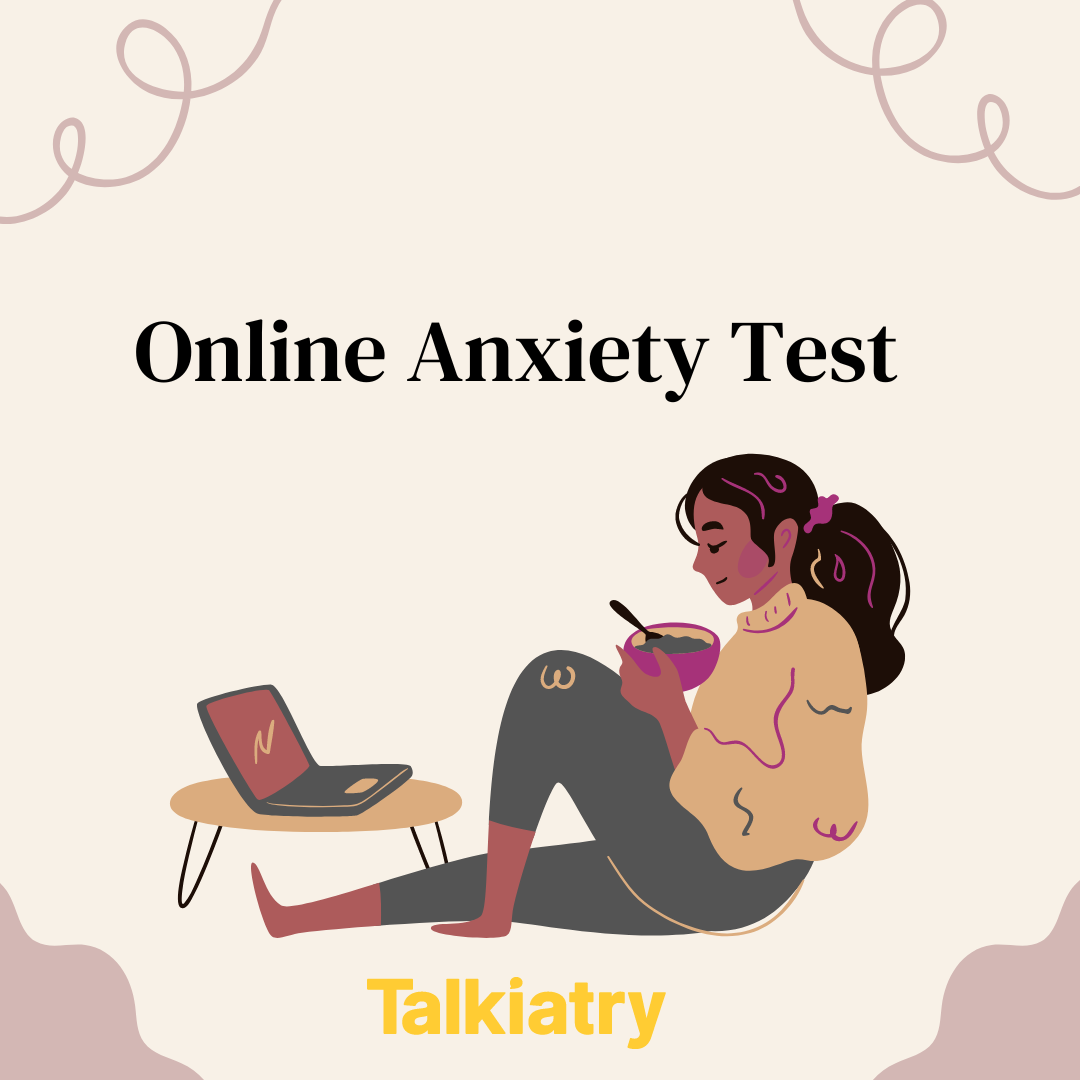
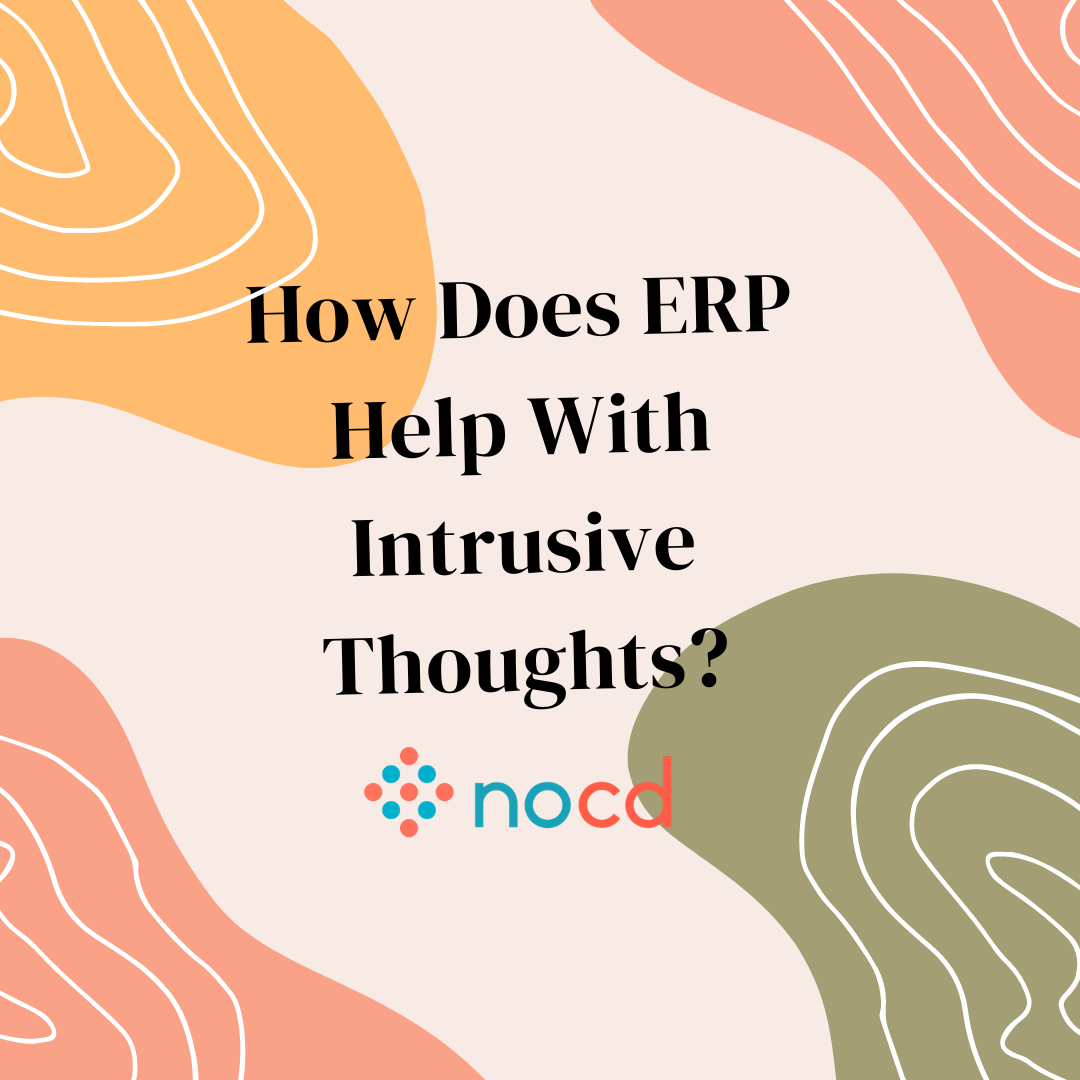
Find a therapist for social anxiety
Get the help you need from a therapist near you
City or zip Search



